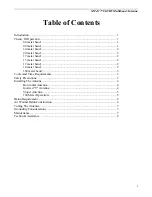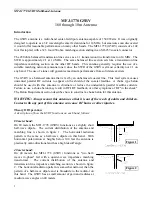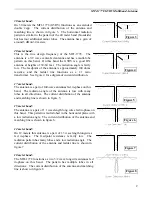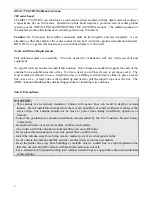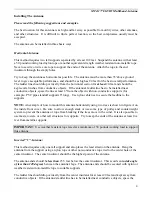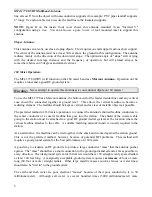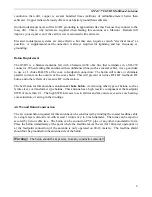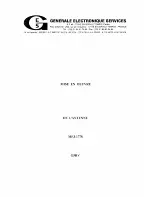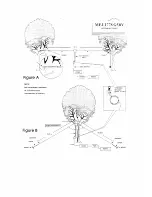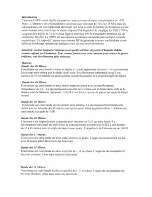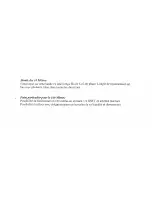
MFJ-1778 G5RV Multiband Antenna
5
line at least 6" from the object with non-conductive supports (for example: PVC pipe standoff supports
6" long). Use nylon cable ties to secure the feedline to the insulated supports.
NOTE:
Figure B on the inside front cover shows this antenna mounted in an "Inverted V"
configuration using a tree. You can also use a pole, tower, or roof mounted mast to support this
antenna.
Sloper Antenna:
This antenna can also be used as a sloping dipole. This requires one tall support and one short support.
The center of the antenna must be at least 30 feet above the ground in this configuration. The antenna
radiates mainly in the direction of the downward slope. The optimum angle of "slope" will varying
with the desired coverage distance and the frequency of operation, but will almost always be
somewhere between 45 degrees and almost vertical.
160 Meter Operation:
The MFJ-1778 (G5RV) will function on the 160 meter band as a
Marconi Antenna.
Operation on 160
requires a tuner and a good RF ground system.
Warning:
Never attempt to operate this antenna as a conventional dipole on 160 meters!
To use the MFJ-1778 as a Marconi antenna, the bottom end of the feeder (ladder line) and any vertical
coax should be connected together at ground level. This allows the vertical feedline to become a
radiating element. The feedline should be kept as vertical and as clear of metallic objects as possible.
The preferred method of 160 meter operation is to connect the antenna's shorted feedline conductors to
the center conductor of a coaxial feedline that goes into the station. The shield of the coaxial cable
going to the station must be attached to a good RF ground (radial system) at the location where the
vertical feedline attaches to the cable. A suitable matching network (tuner) is usually required in the
station.
As an alternative, the feedline can be tied together in the shack and worked against the station ground.
This is not the preferred method, however, because of potential RFI problems. This method still
requires a good ground system for the best performance on 160 meters.
A good way to visualize an RF ground is to picture a large conductive "mass" that the antenna pushes
against. The "mass" should have a short connection to the ground point and extend as far as possible in
every direction. The ideal ground system for 160 meters would have 120 straight evenly spaced radials
at least 140 feet long. A marginally acceptable ground system requires a
minimum
of four or more
long (60 foot or more) straight radials. Other large metallic masses (such as fences or water lines)
should also be "tied in" to the ground system.
The earth and fresh water are poor electrical "masses" because of their poor conductivity (1 to 30
milliohms/meter). Although salt water is several hundred times (5000 milliohms/meter) more


